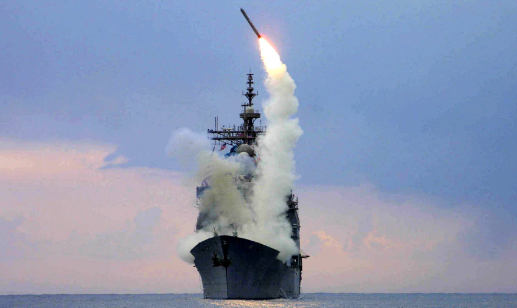U.S. Navy Deploys Long-Range Missiles to Counter China
The U.S. Navy has deployed the AIM-174B missile to boost its aerial capabilities in the Indo-Pacific region, aiming to counter China’s aerial advantage amid growing tensions.
AIM-174B Overview
The AIM-174B is a new missile based on the Raytheon SM-6, and it has the longest range of any U.S. air-to-air missile. Publicly recognized in July, it can hit targets up to 400 km (250 miles) away, significantly surpassing the AIM-120 AMRAAM’s maximum range of 150 km (93 miles). With its extended range, the AIM-174B allows U.S. aircraft to stay further away from threats. This enhances protection for aircraft carriers and enables strikes on key Chinese targets, such as command centers. Historically, the U.S. relied on stealth fighters and shorter-range missiles. However, China’s development of the PL-15 missile, which can reach over 250 km (155 miles), challenged U.S. aerial dominance.
Development and Compatibility
The AIM-174B was quickly developed to respond to the new threat from Chinese stealth aircraft. It is compatible with the U.S. Navy’s F/A-18E/F Super Hornet and might also be used by allied forces, including Australia. The AIM-174B is produced using existing SM-6 production lines, which streamlines manufacturing. Although details are scarce, increased production is expected to improve U.S. military operations in the region. The deployment of the AIM-174B impacts the military dynamics in the South China Sea, potentially deterring Chinese aircraft and altering the regional balance of power. This enhanced capability is likely to influence Chinese military strategies and actions.
About Indo-Pacific
The Indo-Pacific region spans the Indian and Pacific Oceans and is crucial for global trade, home to 60% of the world’s population. It contains over half of the world’s coral reefs, which are vital for marine life. The term “Indo-Pacific” links South and Southeast Asia with Pacific nations and includes strategic chokepoints like the Strait of Malacca. The region is diverse in cultures, languages, and ecosystems.
About the South China Sea
The South China Sea, covering 1.4 million square miles, is the busiest maritime trade route in the world. It includes over 250 small islands and reefs, with the Spratly Islands being particularly disputed. Rich in resources, the sea has around 11 billion barrels of oil and 190 trillion cubic feet of natural gas. It supports diverse marine life but faces environmental challenges from overfishing and pollution.
Month: Current Affairs - August, 2024
Category: Defence Current Affairs








